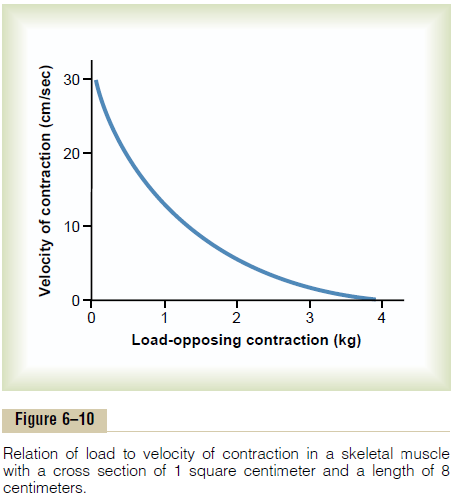Chapter: Medical Physiology: Membrane Physiology, Nerve, and Muscle : Contraction of Skeletal Muscle
Relation of Velocity of Contraction to Load
Relation of Velocity of Contraction to Load
A skeletal muscle contracts extremely rapidly when it contracts against no load—to a state of full contraction in about 0.1 second for the average muscle. When loads are applied, the velocity of contraction becomes pro-gressively less as the load increases, as shown in Figure 6–10. That is, when the load has been increased to equal the maximum force that the muscle can exert, the veloc-ity of contraction becomes zero and no contraction results, despite activation of the muscle fiber.

This decreasing velocity of contraction with load is caused by the fact that a load on a contracting muscle is a reverse force that opposes the contractile force caused by muscle contraction. Therefore, the net force that is available to cause velocity of shortening is correspondingly reduced.
Related Topics